February 2017
February 24, 2017
Live Burros By Mail!
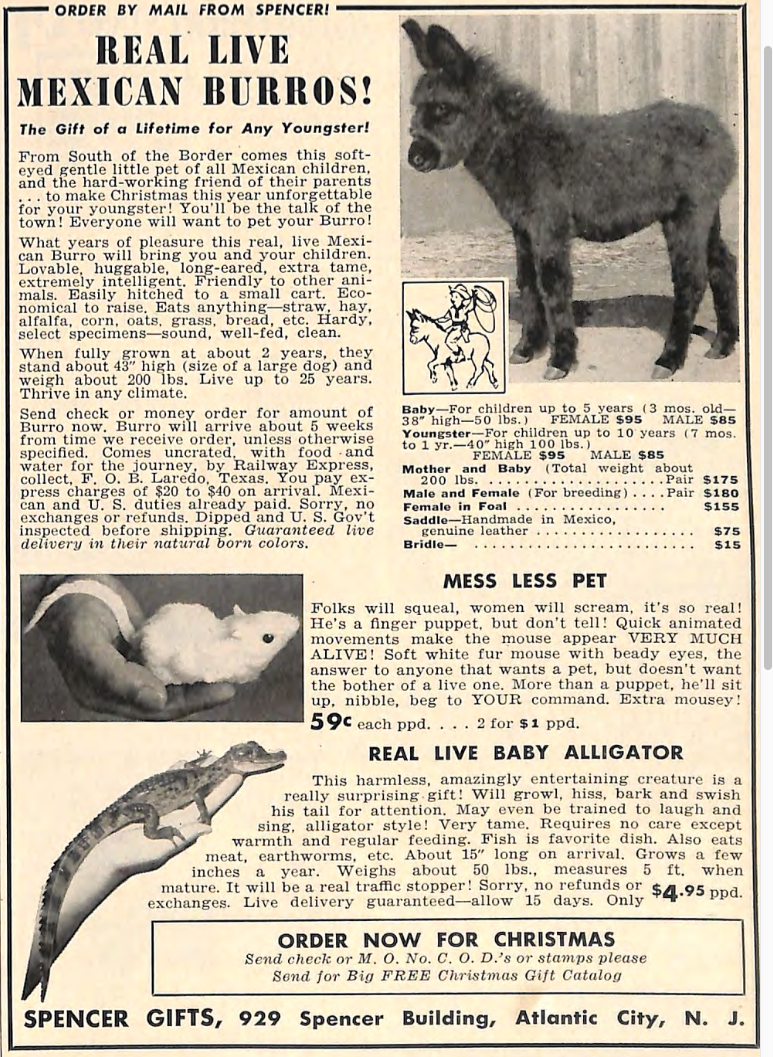
I want these at the Spencer's Gifts location in my local mall!
From THE ELKS MAGAZINE for October 1954.
Posted By: Paul - Fri Feb 24, 2017 -
Comments (2)
Category: Animals, Retailing, 1950s
February 23, 2017
Flying Saucers Are Real
A great new book by my talented and weird writer pal Jack Womack.Read a piece on it here.
Posted By: Paul - Thu Feb 23, 2017 -
Comments (4)
Category: Aliens, Eccentrics, Conspiracy Theories and Theorists, Spaceflight, Astronautics, and Astronomy
Downunder Lipstick Glue
Glue for the lips "downunder."More info: NY Post, Forbes, Patent Office
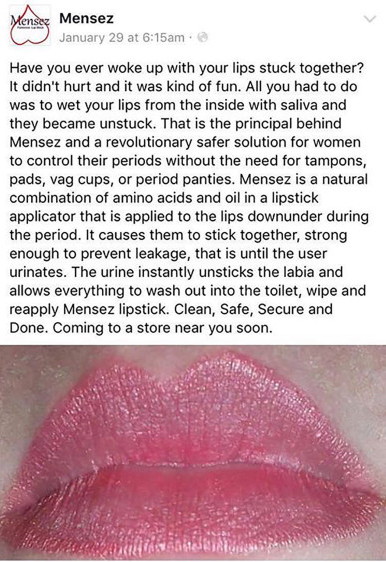
Posted By: Alex - Thu Feb 23, 2017 -
Comments (2)
Category: Hygiene, Body Fluids, Patents, Blood, Genitals
Mystery Gadget 43
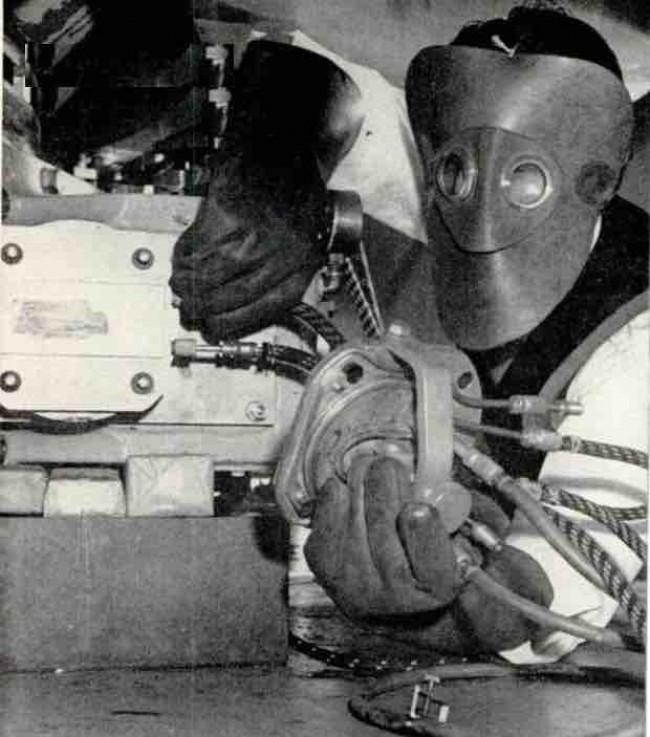
What machine requires such weird protective gear?
The answer is here.
And after the jump.
More in extended >>
Posted By: Paul - Thu Feb 23, 2017 -
Comments (3)
Category: Technology, 1940s
February 22, 2017
Manure Glass
1973 saw the debut of Envirite (aka Glass-Dung, Manure Glass, or Pasture Glass), a promised-to-be revolutionary building material made out of glass and cow manure.It actually seems like it was a pretty good idea. The concept was that you could take old glass bottles, combine them with cow manure, heat both together in a furnace, and the manure would act as a foaming agent fusing the glass together into a versatile building material. So you'd be repurposing two waste products (old glass and manure) into something useful.
The problem, it seems, was actually getting architects and builders to use the stuff. I found a 1990 article that credited the "inherent conservatism of the building industry" with denying us our glass-manure houses.
Somewhere in here there's a joke about what people who live in glass-manure houses shouldn't do.

Lansing State Journal - July 25, 1973

Los Angeles Times - Aug 23, 1973

The Alexandria Town Talk - July 26, 1973
Posted By: Alex - Wed Feb 22, 2017 -
Comments (6)
Category: Buildings and Other Structures, 1970s
Chicago Bar Association Annual Musical Revue
Who knew that Chicago lawyers and judges and other legal folks have been doing a theatrical production for nearly 100 years?
Their home page.
The origin story is told in the 1954 review below.
The videos reveal that none of these folks should leave their day jobs.
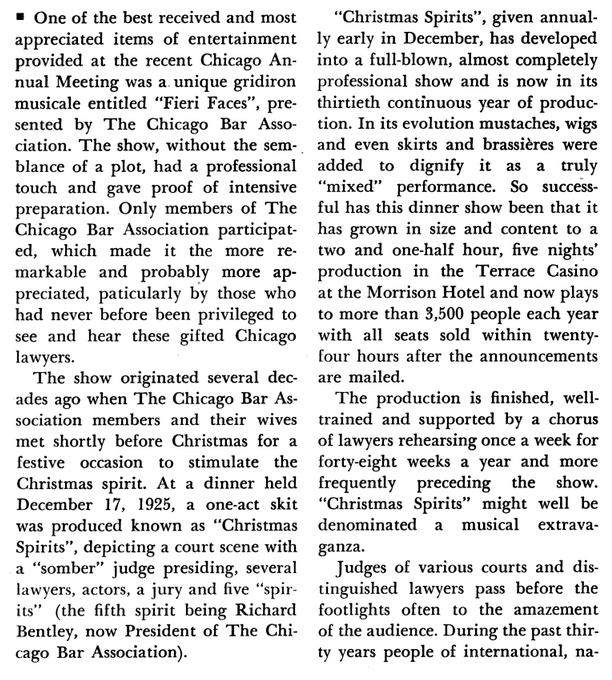
Posted By: Paul - Wed Feb 22, 2017 -
Comments (0)
Category: Entertainment, Law, 1920s
February 21, 2017
The Bruce Effect
If a pregnant rodent is exposed to the scent of an unfamiliar male, she will often spontaneously abort. This is known as the Bruce Effect, after researcher Hilda Bruce who discovered the phenomenon while working at London's National Institute for Medical Research (NIMR) in the 1950s.It's thought that the female rodent does this in order to make herself ready for mating with the new male — because the new male would probably kill the children of the other father once they were born, so why bother carrying them to term. The trick doesn't work with the scent of a castrated male.
The history of the NIMR (pdf - page 208) offers some interesting details about Bruce's research. The Parkes mentioned was Alan Parkes, her boss:
Knowing how skilful perfumers must be in distinguishing between thousands of different odours, they persuaded some Boake representatives to visit NIMR for the purpose of smelling the mice. They invited them to sniff at pieces of cloth that had each been exposed to different cages of various mouse strains. The perfumers had no difficulty in distinguishing the different strains as all had a unique aroma; they even commented that four of the strains were quite similar – all of which had been bred from one original colony at Hampstead. They also noted that the CBA mouse strain, which was fairly new to NIMR, had a wonderful and pleasantly musky smell that could be of commercial interest in perfume manufacture!

Hilda Bruce
Posted By: Alex - Tue Feb 21, 2017 -
Comments (0)
Category: Science, Experiments, Pregnancy, Perfume and Cologne and Other Scents
Joan Ridgway, Yodeling Cowgirl
Plenty more of her on YouTube. But hardly any biographical info. What little there is seems to indicate that despite all cultural signifiers, she was Australian, not American.
Posted By: Paul - Tue Feb 21, 2017 -
Comments (6)
Category: Human Marvels, Music, 1950s, Australia, North America
February 20, 2017
Name That List, #38
What is this a list of? The answer is below in extended.- Scratch face
- Dead Spaniard
- Ape's laugh
- Goose-Turd
- Lustie-Gallant
- Smoked Ox
- Fading Flowing
- Merry Widow
- Kiss-Me-Darling
- Chimney-Sweep
- Dying Monkey
- Mortal Sin
- Love Longing
- Horseflesh
- Flybert
- Soppes-in Wine
- Maide's Blush
More in extended >>
Posted By: Alex - Mon Feb 20, 2017 -
Comments (8)
Category: Name That List
Follies of the Madmen #305
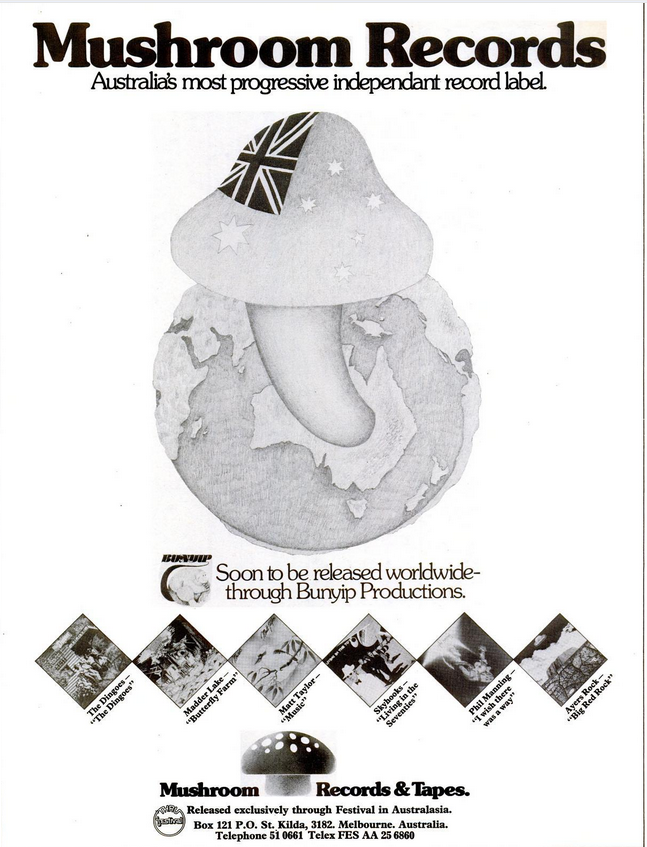
Australia offers the rest of the world its giant mushroom phallus.
Original ad here.
Posted By: Paul - Mon Feb 20, 2017 -
Comments (4)
Category: Business, Advertising, Products, Innuendo, Double Entendres, Symbolism, Nudge-Nudge-Wink-Wink and Subliminal Messages, Music, Public Indecency, 1970s, Australia
| Get WU Posts by Email | |
|---|---|

| Who We Are |
|---|
| Alex Boese Alex is the creator and curator of the Museum of Hoaxes. He's also the author of various weird, non-fiction books such as Elephants on Acid. Paul Di Filippo Paul has been paid to put weird ideas into fictional form for over thirty years, in his career as a noted science fiction writer. He has recently begun blogging on many curious topics with three fellow writers at The Inferior 4+1. Chuck Shepherd Chuck is the purveyor of News of the Weird, the syndicated column which for decades has set the gold-standard for reporting on oddities and the bizarre. Our banner was drawn by the legendary underground cartoonist Rick Altergott. Contact Us |

